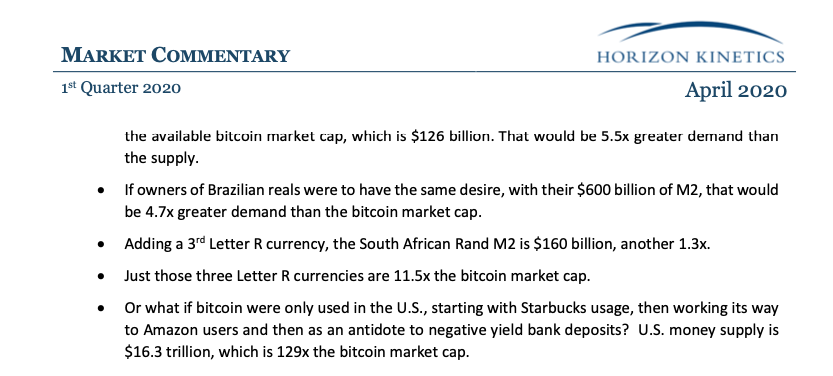
income securities, more or less 1 or 2 percent, and 2) a real money debasement rate of 6%, and which
was likely to accelerate over time. 7/n
value of a Japanese bond would be, since the government made the price. Now the U.S. is doing it. 14/n
Now there’s a link that’s never existed before, not one that you could circle on a document, between the White House and the Fed. 15/n
return prospects for bonds are now defined by a binary set of possibilities, neither of which works. There’s no scenario in which investors escape losing money in bonds. 18/n
:
Since the ultimate danger is in the bond market, equities are where the defensive shift needs to be. 19/n
order have been in such disequilibrium.
Today, a challenge is that governments have so distorted the capital markets that it’s extraordinarily
difficult to construct a portfolio. 20/n
maybe a lot.
So, the stock market might remain elevated, people will be heartened and might feel that the danger is over. 21/n
it more extreme.
Indexation has gotten so large that it has become the market, become the marginal trade. 22/n
the largest cos. In the past decade, indexation has not been providing safety via diversification – just ever-increasing concentration and valuation risk. 23/n
would have had to not only own that small, 1% group of concentrated stocks, but would have had to
overweight all of them. No way around it. 24/n
government support is just getting under way. 26/n @TaviCosta
three months, though, governments will start reporting their budgets. Japan, the U.K. and Canada, for
instance, have March 31st fiscal years. 27/n
alarm investors. 28/n
.. the earnings multiples really were associated with the inflation rate. 32/n
this period well, irrespective of the alterations in the economy. It helps if the business has minimal fixed costs that inflation could magnify. 33/n
The full letter if you are interested is ~23 pages & is at horizonkinetics.com/wp-content/upl…
39/n











